ALSACE VOSGES - Le Tanet - Bichtstein - Villa Sidi-Brahim
Year of visit: 2010
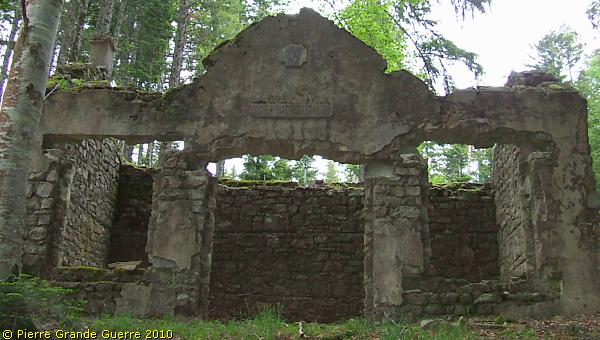
From Soultzmatt we return to Munster. From Munster we drive westward into the direction of the Col de la Schlucht. On a rainy day we explore an interesting stronghold position of the Chasseurs Alpins at the eastern sub-summit of le Tanet, the Bichtstein, guarding the village of Soultzeren and the road from Munster to the Col de la Schlucht.
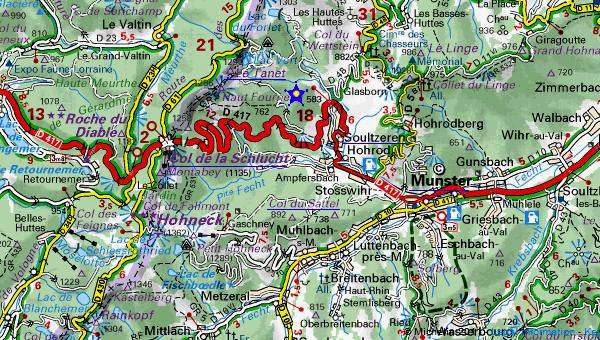
Some 3 km. after passing the village of Soultzeren we turn right at a sharp hairpin curve to follow the numberless road upward to the summit of le Tanet. Halfway to the summit, after some 2,5 km., on a junction of 3 roads, we park our car.
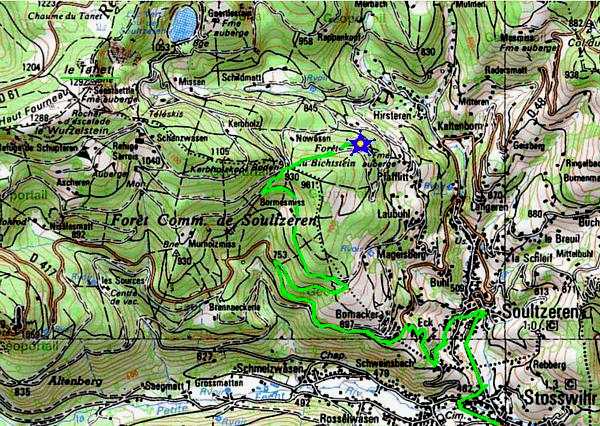
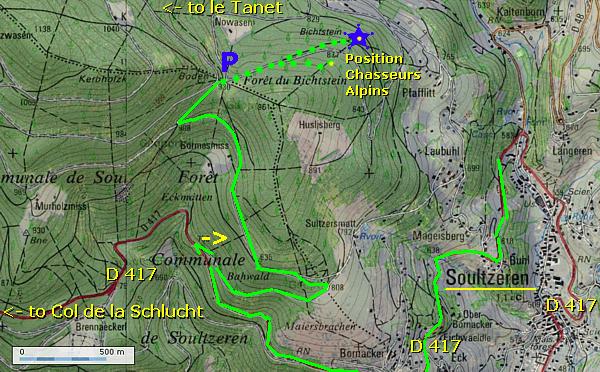
With a view north-eastward we walk on a track some 500 m. upward and eastward into the Forêt du Bichtstein.
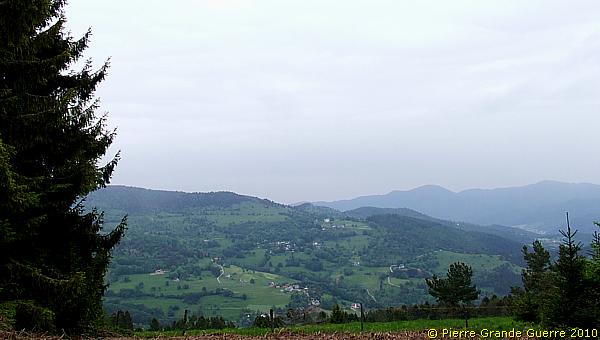
In the autumn of 1914 the 12e Bataillon Chasseurs Alpins of Grenoble, being a component of the 115e Brigade, the “Brigade de la Schlucht”, were stationed at this position on the Bichtstein, a height of 877 m.
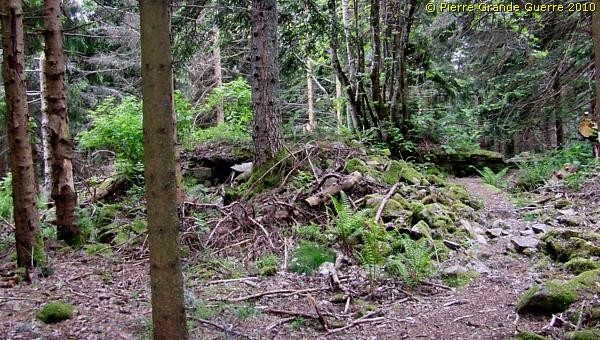
This bunker, scattered with rubble and debris, is a relic of the stronghold position of the Chasseurs Alpins on this height of 877 m.
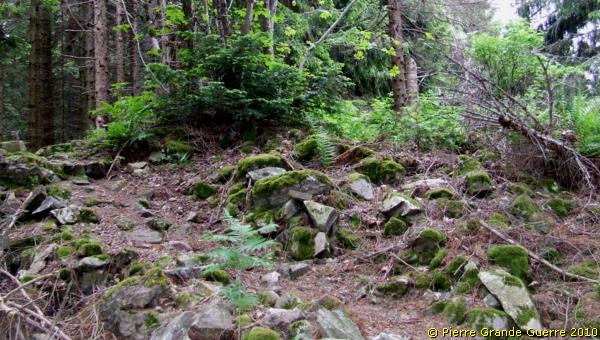
Around this inaccessible bunker we find trenches, ...
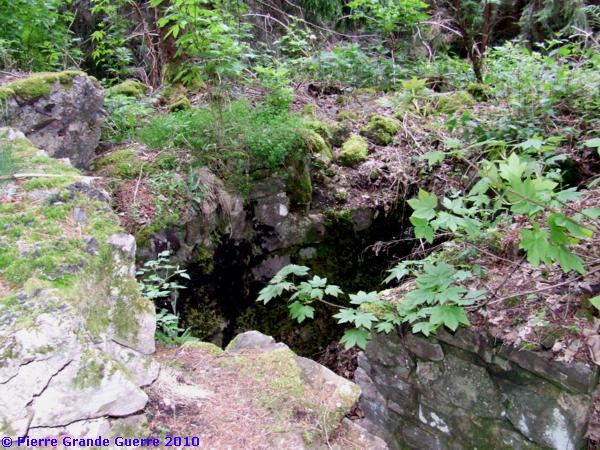
... constructed with natural rocks.

Before we go on, I show you in the frame below some concise information about this site and about one of the units, which was stationed here.
The 12e B.C.A. in the Vosges - 1914-1916
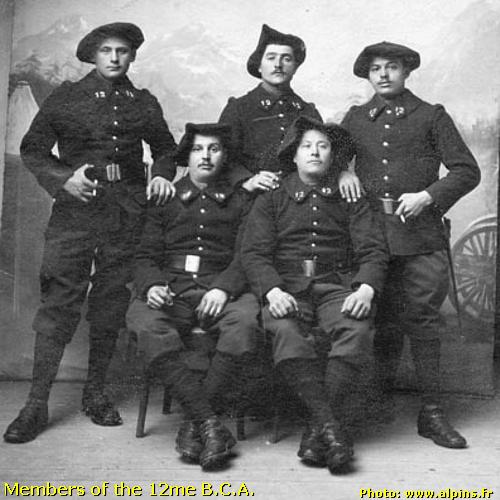
After the bloody fights for Ingersheim near Colmar on 22 August 1914 against Württemberger units and units of the Bavarian L.I.R. 1, the 12e Bataillon Chasseurs Alpins and the 152e R.I., had to withdraw westward in a fighting retreat with many losses.
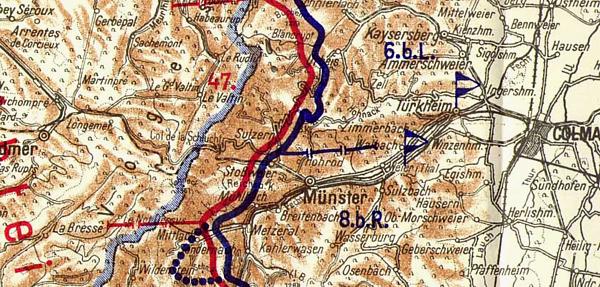
Lt. Colonel Gratier led his 12th battalion of special mountain troops first to fight fiercely near Ammerschwihr and Kintzheim, next in the Katzenthal, and near Giragoutte . At 2 September 1914 the German fighting units forced the 12e B.C.A., as all French units present in this region, to retreat at the eastern slopes and summits of the Vosges Ridges, “les Crêtes”. After fights at the Col du Wettstein on 2 September the 12e B.C.A. arrived at 4 September 1914 at their position east of and near the Col de la Schlucht.
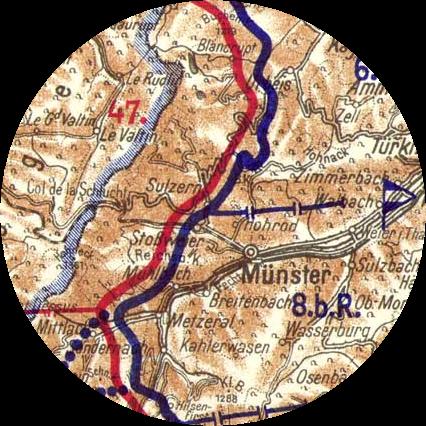
On the same day Capitaine Martin took over the command of the battalion of Lt. Colonel Gratier, who had just been promoted to General of the 115e Brigade, the “Brigade de la Schlucht”, a component of the 66e Division d’Infanterie.
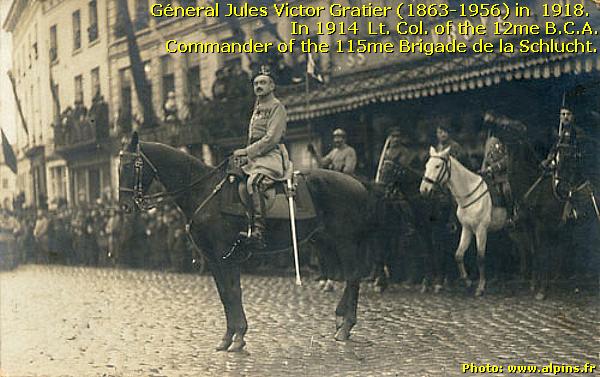
The 66e D.I. was a component of the Groupement des Vosges, the Vosges Army Group.
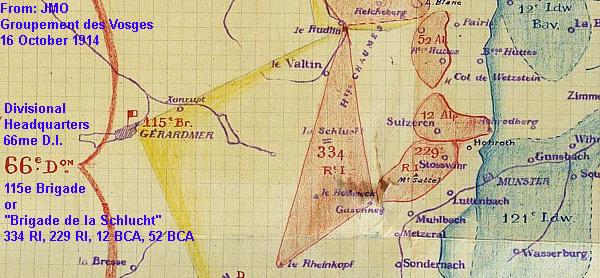
Next to the 12e B.C.A. the Brigade de la Schlucht knew also 3 other components, the 334e R.I. and the 229e R.I., and at the left flank, the Reserve Battalion of the 12e B.C.A. , the 52e B.C.A.
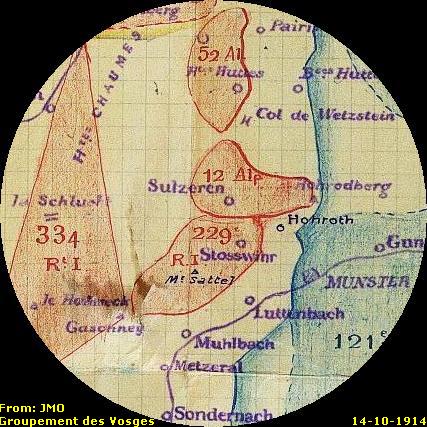
So, the 12e B.C.A. was the first unit out of other units of Chasseurs Alpins, who occupied this position. In September and October 1914 the 12e B.C.A. had to defend the lines near the village Soultzeren and the Col de la Schlucht . Later in the war various companies of the 12e B.C.A. would be involved in battles on nearby mountains, like at the Barrenkopf in the beginning of February 1915.
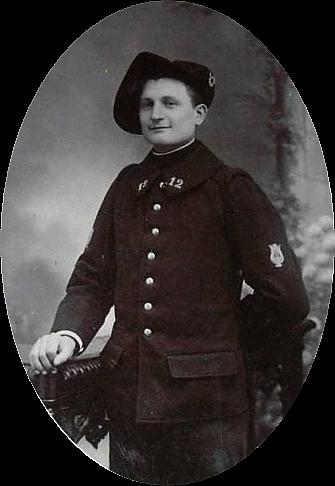
During the Battle of Munster , which started at 19 February 1915, the 12e B.C.A. fought fiercely at Stosswihr, reinforced by their intended relief troops of the 11e B.C.A. Some days later during the Battle of Munster, from 28 February 1915, the Bavarian and Württemberger soldiers of the Armee Abteilung of General Gaede started again a series of attacks at the village of Soultzeren. The 12e B.C.A. was again forced to defend Soultzeren. At 1 March, after one day of fighting, the Battalion counted 100 men killed and 40 men taken Prisoner of War. The fighting for the village would go on until 7 March. During the fights for Soultzeren the 12e B.C.A. lost 5 captains, amongst them the commander of the Battalion, Capitaine Martin.
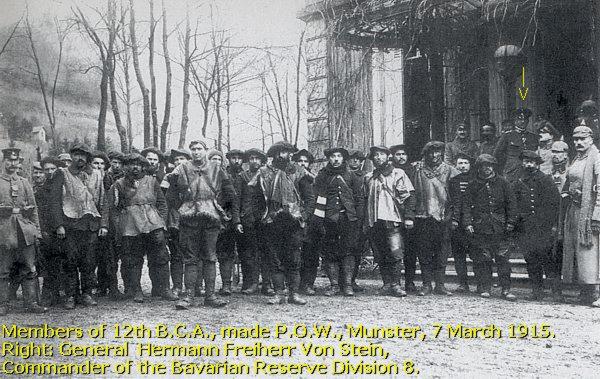
On 14 July Capitaine Thierry took over the command and led his battalion, as a special forces unit of General Nollet, into the battle for the Barrenkopf of July and August 1915.
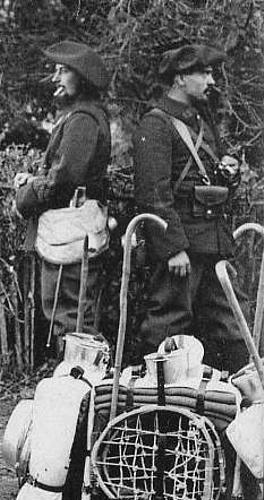
In August and September the 12e B.C.A. would also be involved in the battles of the Lingekopf and the Schratzmännele .
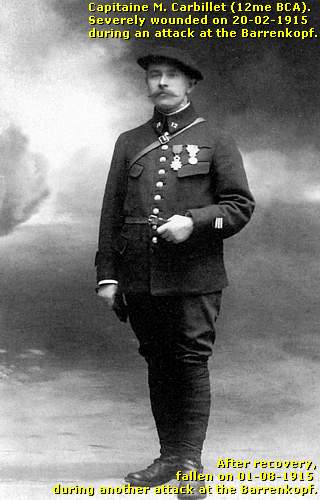
In December 1915 and January 1916 the 12e B.C.A. was involved at the Rehfelsen and the Hirtzstein in the Christmas Battles for the Hartmannswillerkopf .
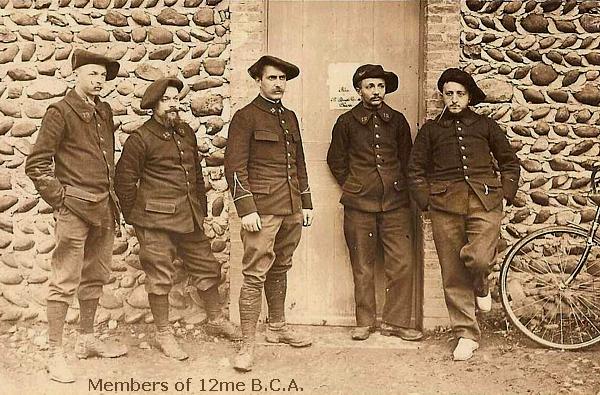
After a period of rest near Fraize, the Battalion
was stationed in March until May 1916 in the
Metzeral
Sector, before
it departed to Curlu at the
Somme
to fight their
part in the great battle, as it would do later on during the war on
various battlefields, even in Italy.
Sources
: Journal des marches et Opérations – Groupement des Vosges - Henri Charles-Lavauzelle: “Historique Résumé de 12e Bataillon de
Chasseurs Alpins”, 1920.
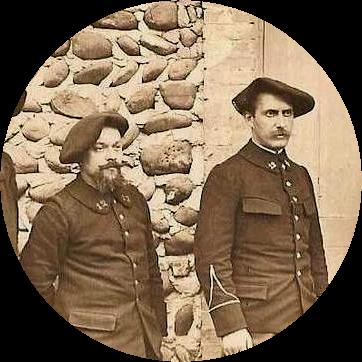
After this intermezzo we continue from the bunker some 50 m. to the west, ...
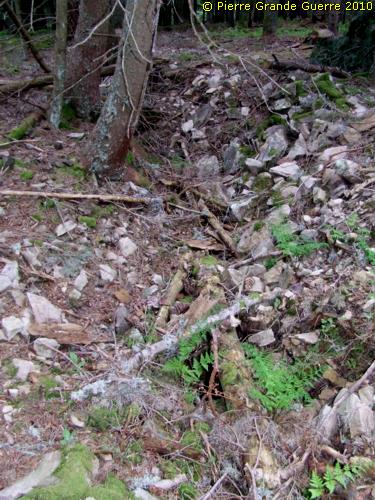
... where we find traces of trenches, ...
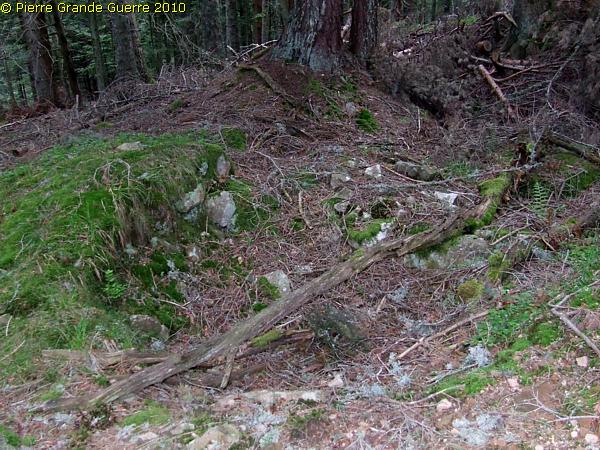
... facing the east.
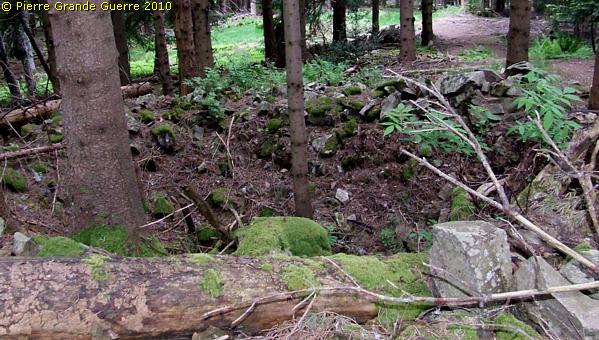
We return on the track and we descend some 250 m. westward to look for our original goal.
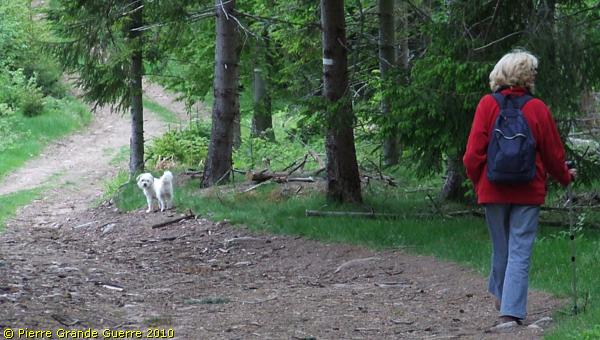
In between the trees we sometimes get a glimpse north-westward of the summit of le Tanet.
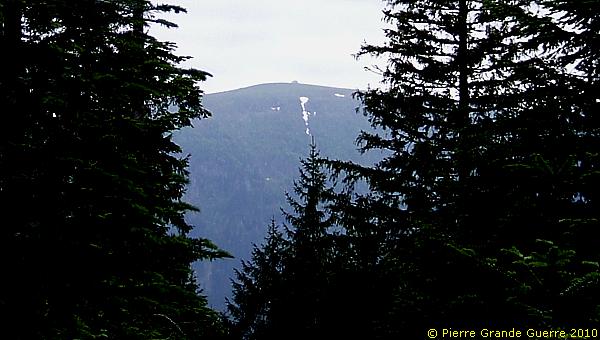
Some 100 m. south of the track we had some difficulty to locate this ruined house.

This the front of the former officers quarters of the Chasseurs Alpins, stationed here.

The architrave of this masonry building tells us some interesting hints.
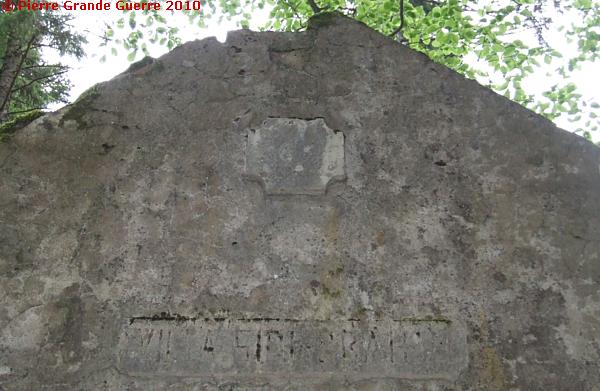
The officers quarters is named " Villa Sidi-Brahim ".

For the Chasseurs Alpins "Sidi-Brahim" forms a most significant name, which I explain concisely in the frame below.
|
The battle cry "Sidi-Brahim!" at the Hilsenfirst |

During the Great War “Sidi-Brahim!” used to be the battle cry of the Chasseurs Alpins. Legend tells the battle cry was first used on 14 June 1915 at the Hilsenfirst by the 6th company of the 7e B.C.A.
The Battle of Sidi-Brahim - 1845
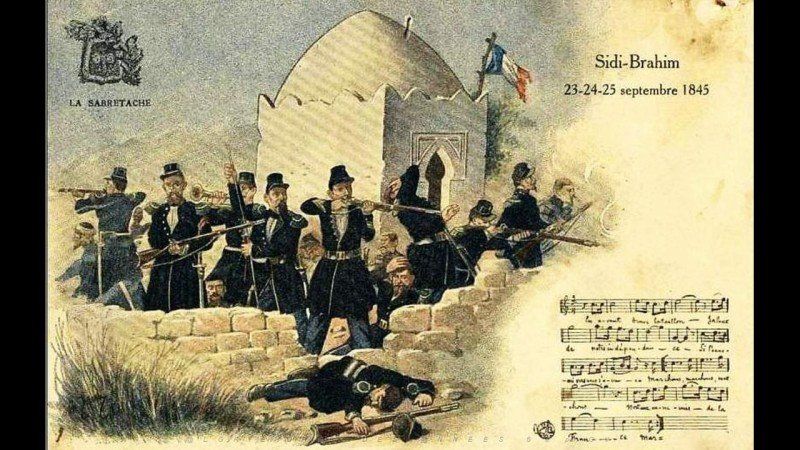
“Sidi-Brahim!” refers to the Battle of Sidi-Brahim in Algeria of 23-29 September 1845. The predecessors of the Chasseurs Alpins, the 8me Bataillon Chasseurs à Pied, were surrounded together with the 2me Régiment des Hussards in the marabout of Sidi-Brahim by the superior numbers of Abd-el Kader’s 10.000 Algerians.

Though they were completely surrounded and besieged, and having many losses the French did not surrender. When the remaining 80 survivors completely ran out of munitions, they managed to break through the enemy lines with a bayonet charge, but only 16 of them managed to rejoin the French lines.
Sidi-Brahim at
the Hilsenfirst - 1915

On 14 June 1915 the 6th coy. of the 7e B.C.A. was engaged in heavy fighting at the Hilsenfirst (1.270 m.) The Chasseurs were almost encircled by German troops. For three days the 6th coy. defended desperately their trench. Running out of ammunition and having many losses the Chasseurs, shouting “Sidi-Brahim!”, were even forced to defend themselves, throwing rocks down the slope.
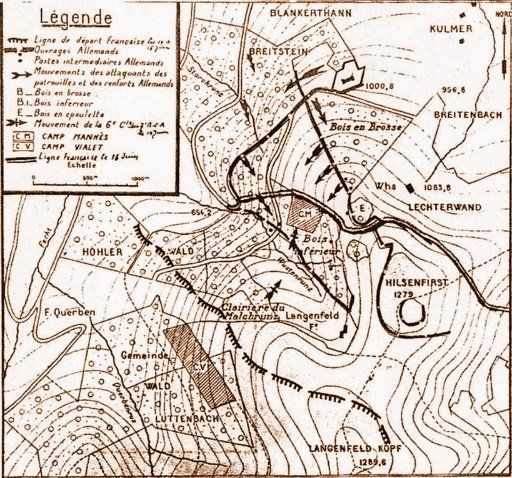
After 3 days they were liberated from this critical situation by volunteers of the 13e B.C.A. and other companies of the 7e B.C.A.
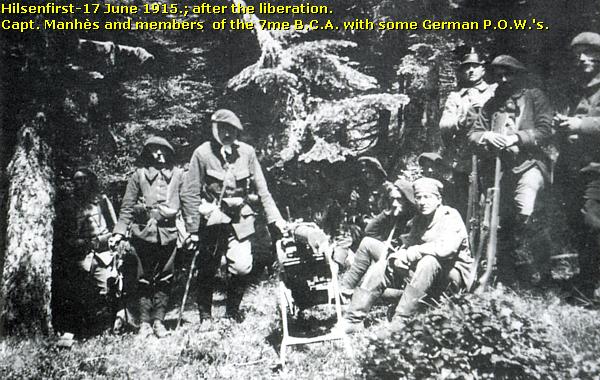
Legend tells that this event was also the occasion, where the Chasseurs Alpins got their proud nick-name from the Germans of the “Diables Bleus”, the Blue Devils. “Sidi-Brahim!” would forever stay the war cry of the Chasseurs Alpins.

Back to the front of the Villa Sidi-Brahim. There is another interesting inscription to be found on the architrave.

" 1914-1915 - République Française ", decorated by a hunting horn.
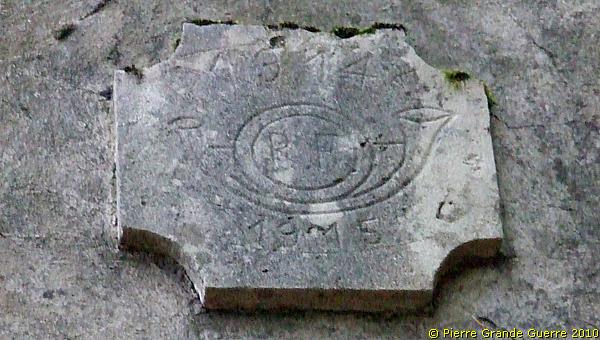
These two inscriptions on the architrave confirm the presence of the Chasseurs Alpins on this spot.
|
The hunting horn and the bugle; emblem and symbol of the Chasseurs Alpins |

The hunting horn on the front of this officers quarters forms the symbol or emblem of the Chasseurs Alpins, which they always, until nowadays, wear on their beret hat, their “Tarte”, or pie, as the Chasseurs call it themselves.
The hunting horn is also used on official occasions like musical parades, as we see on this realistic painting below of a festive event in 1917, probably at St. Amarin.

The Chasseurs knew also “Clairon” soldiers, who were playing the field version of the horn, the bugle. At the right of these details below you will find the bugle in the hand of the fanfare’s conductor. The “Clairons” blew the bugle with different tunes to signal and to command the troops like for instance to attack or to retreat. The bugle announced also important parts of the day, like the last post. Notice that some hunting horn blowers keep their bugle at hand under their left arm.
Dutch Readers , for more info about the historic background of the Chasseurs Alpins, please read my Dutch, illustrated lecture elsewhere on my website; " De Blauwe Duivels in de Vogezen - Chasseurs Alpins "
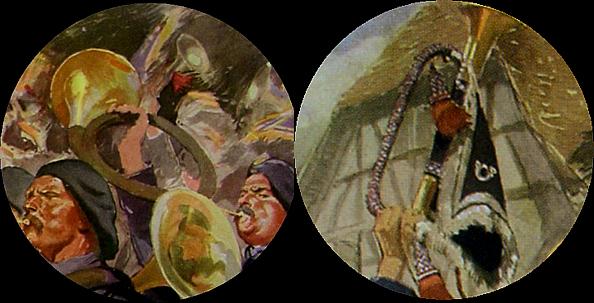
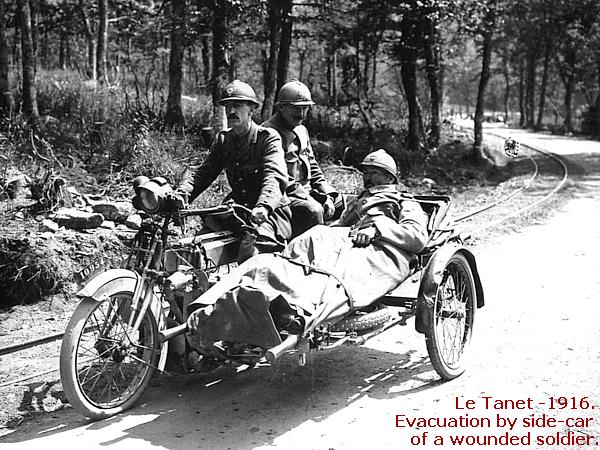
On the ground in front of the Villa Sidi-Brahim ...

we find metal parts of the building, ...
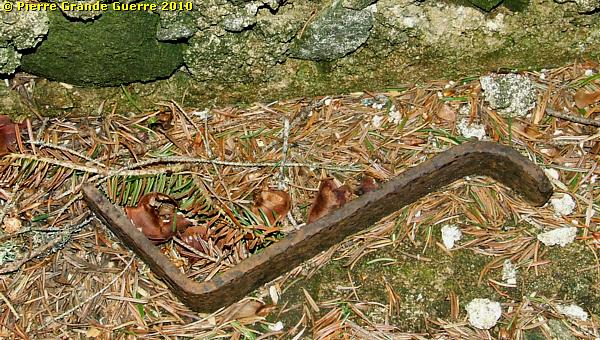
... and a lot of shards of orange roof tiles, which used to cover the house.
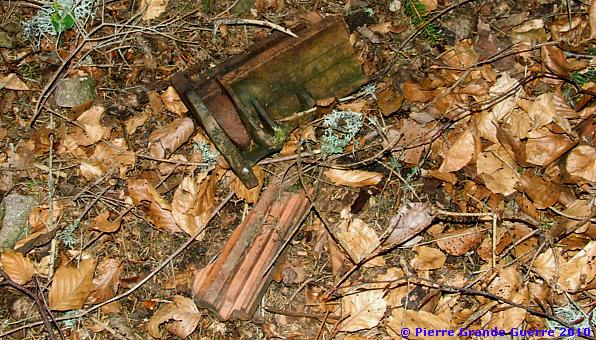
A last view at the interior of the Villa Sidi-Brahim.

Another 50 m. to the east we find the ruin of another house, which is roughly similar to the Villa Sidi-Brahim.
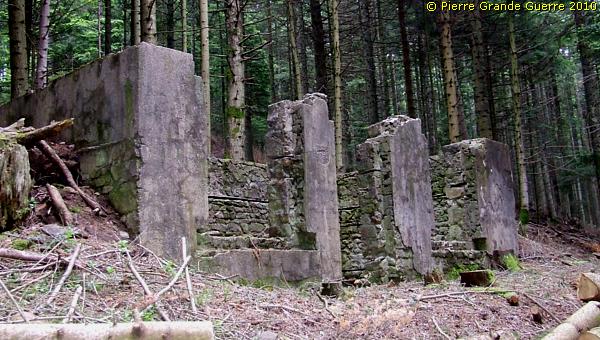
I don't know which function this house had. Considering the limited size of the Villa Sidi-Brahim, I suppose, this house could probably have served as the annexe of the Villa, offering other officers their quarters.
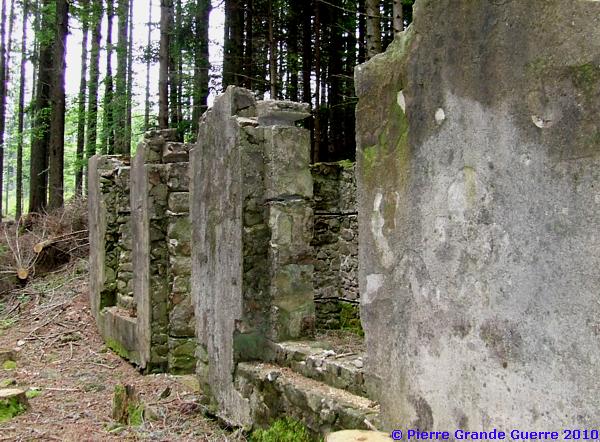
We leave the Villa Sidi-Brahim and we return to our car. On the next photo page we go to the Col de la Schlucht
to continue our route along the frontline southward along the Route des Crêtes.
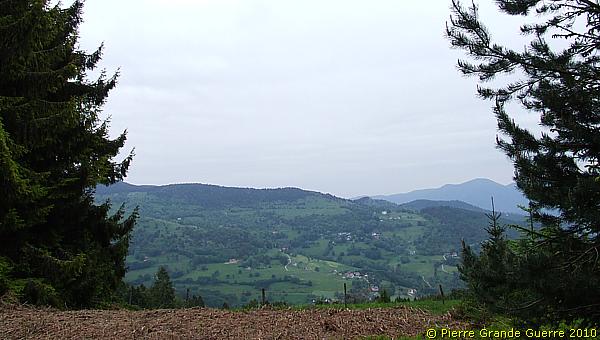
Continue to the next chapter: " Route des Crêtes - Hohneck - Grand Ballon - Sudel "










